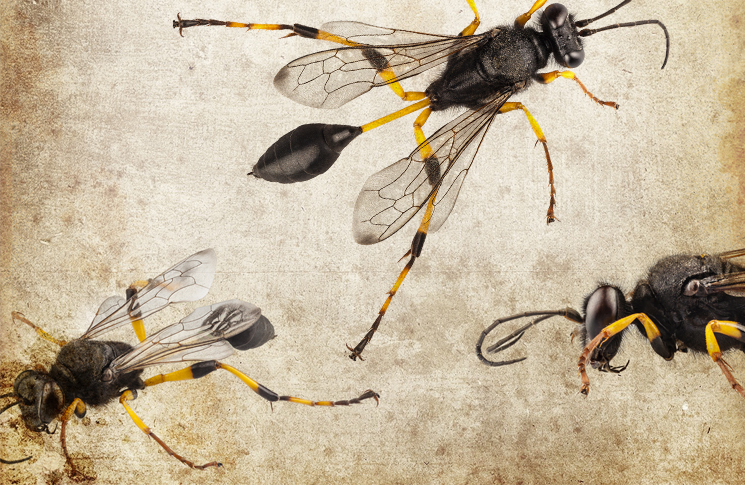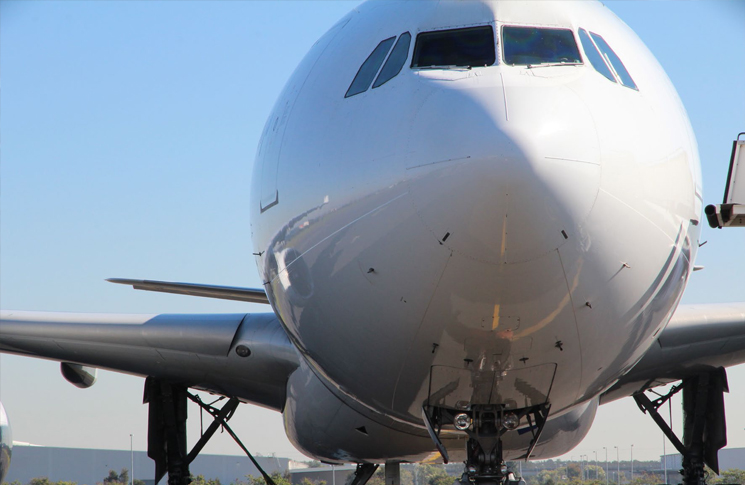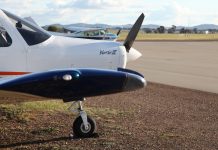Wasps are a hazard to any aircraft, as recent events show.
Consider the humble wasp. When it builds its nest in the pitot tube of an airliner, it is like Luke Skywalker in Star Wars, destroying the Death Star by firing two torpedoes down the unprotected exhaust port which leads directly to the main reactor. It was not a happy ending for all those on board the Death Star, nor was it for all those on board the Birgenair Flight ALW 301 near the Dominican Republic in 1996.
At 80 knots on take-off the captain found out that his air speed indicator (ASI) wasn’t working properly. The co-pilot’s indicator seemed to work fine. While climbing through 4700 feet the captain’s ASI read 350 knots (real speed was about 220 knots); ‘resulting in an autopilot/autothrottle reaction to increase the pitch-up attitude and a power reduction in order to lower the airspeed’. At that time the crew got ‘rudder ratio’ and ‘Mach airspeed’ advisory warnings.
Both pilots got confused when the co-pilot stated that his ASI read 200 knots decreasing while getting an excessive speed-warning, followed by a stick shaker warning. This led the pilots to believe that both ASIs were unreliable.
Finally reali[s]ing that they were losing speed and altitude they disconnected the autopilot (which, fed by the captain’s faulty ASI, had reduced the speed close to the stall speed) and applied full thrust. At 23:47:17 an aural GPWS warning sounded. Eight seconds later the aircraft struck the ocean. (Aviation Safety Network/Flight Safety Foundation)
The investigation concluded that a wasp nest blocked the pitot tube to the captain’s airspeed indicator in their Boeing 757-225. The Birgenair wasp theory gains credence from two confirmed incidents at Brisbane Airport, which were investigated by the Australian Transport Safety Bureau.
- In 2006 the crew of a Qantas Airbus A330 noticed airspeed anomalies and rejected their take-off.
- In 2013 an Etihad A330 also rejected take-off under similar circumstances. But after inspection of the ADIRU (air data and inertial reference unit) computers they took off again, and this time had to make a quick circuit and overweight landing.
In both these cases mud dauber wasps’ nests were found blocking the aircraft pitot tubes. There have been no fewer than 11 strikingly similar cases involving large passenger-carrying aircraft in Australia from 2013 to May 2015, (including two last month), which involved rejected take-offs, air returns and burning off excess fuel to avoid overweight landings.
Undetected wasps’ nests are clearly introducing unsafe conditions and costing money.
The Brisbane cases also showed that mud dauber wasps can work fairly quickly—the Etihad aircraft had been on the ground for less than two hours. Anecdotally, wasps have been seen to build a nest in less than 30 minutes.
Various species of mud dauber wasp (so-called because the creature builds its nest using earth, moisture and its own secretions) are found around the world. According to the Australian Museum it’s found throughout Australia, measures about three centimetres long, and lives in urban areas, forests, woodlands, swampy areas—and airports large and small.
It’s not often that CASA publishes an airworthiness bulletin that applies to all aircraft, but AWB 02-052 Wasp Nest Infestation—Alert issued May 2015, does just that, because wasps are not selective. These insects love the nooks and crannies of aircraft large and small, in particular pitot tubes, fuel tank vents and drains in which to build their solid, well-stocked mud larders.
Mud dauber wasp nests pose a significant safety hazard to aircraft because the wasp’s nest can completely block not only pitot tubes, but fuel tank vents and drains.
Pitot tubes blocked by a wasp nest typically remain undetected until halfway down the runway. A wasp nest in the vent of a small aircraft fuel system is usually only discovered as the pilot watches the fuel tank being crushed in flight, or the fuel quantity strangely staying static, or even increasing, as the bladder tank gets sucked off its buttons; or during the post-crash investigation.
In 2013, CASA airworthiness bulletin AWB 28-013 re-examined the issue of over-wing bladder tank vents on early production Cessna 180s. In the US, several of these aeroplanes had vented fuel into the low-pressure zone above the wing when the front port of the tank vent was blocked by ice. The venting action is particularly treacherous; because as the bladder tank is pulled upwards in the wing it fools the fuel gauges, which show no sign of the disastrous fuel loss occurring via the hole in the back of the vent.
AWB 28-013 raises the possibility that this situation might also result from wasp action. It also noted that: ‘single point fuel system vents or vent systems which utilise dynamic air pressure to assist the flexible bladder fuel tank to remain conformed to the tank cavity are not limited to Cessna 180 aeroplanes’.
Wasps can cause other hazards. In 2005 a Saab 340B operator reported a fault in the cabin pressurisation system, traced to a mud dauber’s nest in the vacuum jet pump exhaust port. And earlier this year an aircraft maintenance shop in Wagga Wagga, NSW, sent CASA some extraordinary photos of a wasp nest discovered when a Cessna 182 came in for maintenance. Hard, bricklike nests had been built inside the wing of a Cessna 182 in the cavity formed between the rear spar and the flap fairing, and in the rear fuselage, including one large wasp nest entirely suspended on the flight control cables.
These could not be seen during the pre-flight inspection, and had the potential to foul controls if they were to dislodge or jam against areas in the structure. Wasps’ nests have also been found inside flight controls, with the attendant risk of affecting the structure and static balance, raising the possibility of destructive flutter.
What you should do
CASA recommends that owners and operators follow the manufacturer’s maintenance instructions with regard to parking and storage. Also:
- Install approved fuel vent screens or removable drain/vent covers and engine compartment blanks, as well as installing tight fitting pitot/static vent covers.
- Remove inspection panels as required to inspect unsealed wing and fuselage cavities before flight, if the aircraft has been stored long term in the open air.
- Continually monitor and remove any wasp nesting sites in the general area where the aircraft is stored or maintained.
Webs and wings
Other creatures have shown a fondness to make aircraft their home. A 2009 service difficulty report submitted by a PA-31 Chieftain operator reported contamination of both wing tips by about 50 litres volume of ‘bird nest material.’ Yuck! A Cessna 172 last year reported a burning smell in the cockpit that turned out to come from bird nest material in the exhaust heater shroud.
And an automotive report from the US, while not (yet) a direct aviation hazard, is another reason to do a diligent preflight inspection under the cowling before every flight.
Mazda has issued two recalls for US-model cars (Australian ones are not affected) that can conceivably suffer fuel tank cracking as the result of spider infestation. A type of spider—which apparently is attracted to the hydrocarbons in automotive fuel (MOGAS)—may weave a nest in the evaporative canister vent line, potentially restricting it. A restricted line can cause negative pressure in the fuel tank and eventual cracking.
And the type of spider? It’s the slender sac (or Golden Orb) spider, which according to the Australian Museum, is a cream, brown or yellow spider found all over Australia.






Comments are closed.